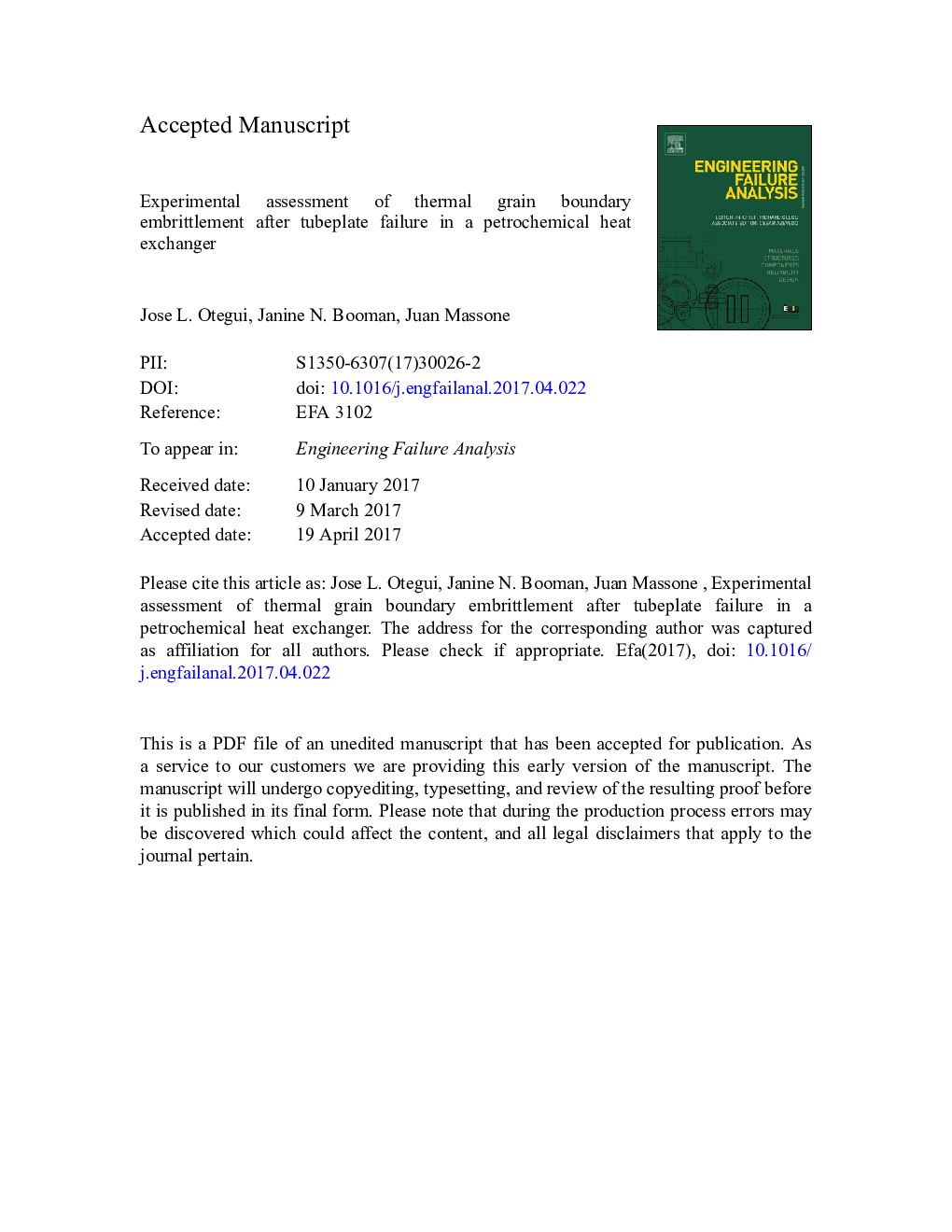| Article ID | Journal | Published Year | Pages | File Type |
|---|---|---|---|---|
| 5013544 | Engineering Failure Analysis | 2017 | 30 Pages |
Abstract
The analysis of multiple cracks in a heat exchanger tubeplate at a petrochemical plant led to experimental replication of in-service damage. High lifting stresses created a first leak that was repaired. Extended branched intergranular cracking developed from the tubeplate surface around the repair weld after few weeks of renewed operation. Chemical analyses failed to detect Na on crack surfaces, while operative conditions also allowed discarding a typical SCC cracking mechanism. Lack of radial interference between tubes and plate, lack of penetration and lack of fusion at tube to tubeplate weld roots were also thought as contributors to cracking. Microstructural analyses revealed martensite clusters in welds and HAZ, and austenite grain boundary precipitates in the tubeplate base material. Thermal cycles were applied to ex-service samples to replicate the conditions for these brittle micro constituents, which were found to be unstable at operating temperatures. Mechanical testing also replicated grain boundary weakness. This inadequate structure was related to welding without proper thermal cycles and heat treatments.
Keywords
Related Topics
Physical Sciences and Engineering
Engineering
Industrial and Manufacturing Engineering
Authors
Jose L. Otegui, Janine N. Booman, Juan Massone,
